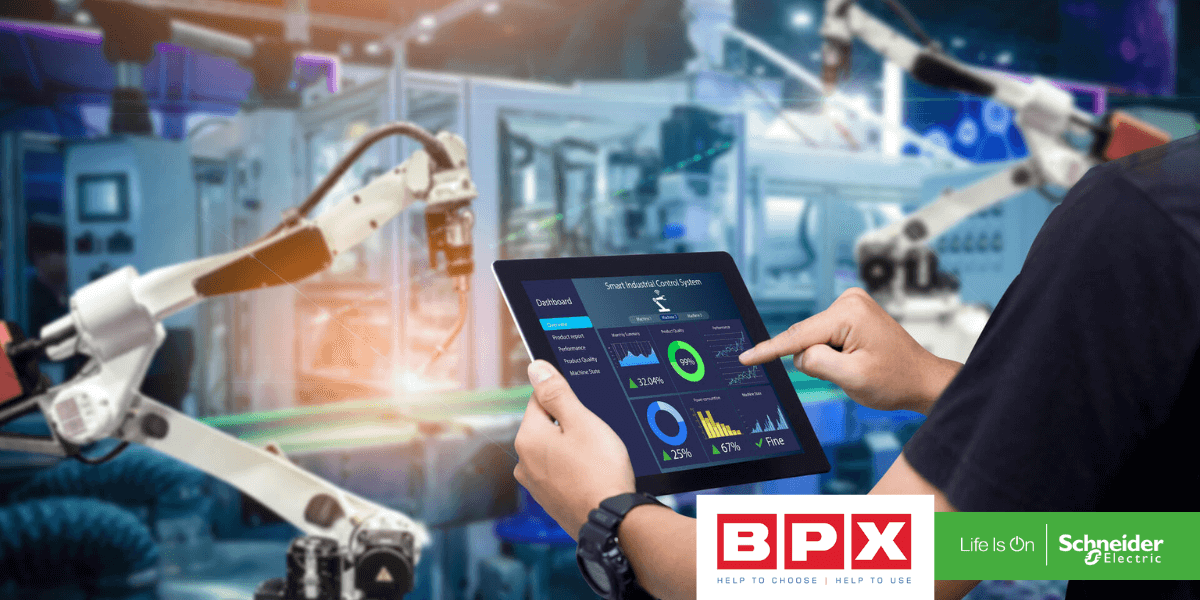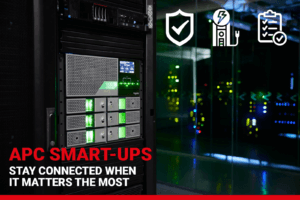In the ever-evolving landscape of industrial automation, electromechanical products play a crucial role in ensuring power distribution systems remain efficient. This blog post delves into the various aspects of electromechanical product ranges that make up these systems, focusing on protection, resilience, safety, communications, and other critical considerations.
We will also explore specific vulnerabilities within components and how to address them, while highlighting advanced features from Schneider Electric that enhance machine builders’ and end users’ experiences. Additionally, we will examine relevant applications and industries where these principles are particularly pertinent.
What are Electromechanical Products?
Electromechanical products combine electrical and mechanical processes to perform various functions. These can include relays, contactors, circuit breakers, and motor starters, which are essential for controlling and distributing electrical power in industrial settings. Understanding how these products work and their applications is vital for optimising power distribution systems.
Key Considerations in Power Distribution Systems:
1. Protection
Protection mechanisms are essential to safeguard equipment and personnel from electrical faults. Key components include:
- Circuit Breakers: These devices automatically disconnect power in the event of an overload or short circuit, preventing equipment damage and enhancing safety.
- Fuses: Fuses provide overcurrent protection by melting and breaking the circuit when excessive current flows.
Example of Vulnerability: Circuit breakers can be compromised by environmental factors such as dust, moisture, and extreme temperatures. To counter these vulnerabilities, consider using IP-rated enclosures that protect against dust and water ingress.
2. Resilience
Resilience in power distribution systems ensures continuous operation during adverse conditions. Key features include:
- Redundancy: Implementing redundant power supplies and backup systems can prevent downtime during a failure.
- Robust Design: Products designed to withstand harsh environments, such as those with reinforced casings, can enhance resilience.
Example of Vulnerability: Power distribution systems in manufacturing plants may face disruptions from power surges or outages. Utilising surge protection devices (SPDs) can mitigate these risks by diverting excess voltage away from sensitive equipment.
3. Safety
Safety is paramount in any industrial setting. Electromechanical products should incorporate safety features such as:
- Emergency Stop Buttons: These allow for immediate disconnection of power in emergencies.
- Lockout/Tagout (LOTO) Systems: These ensure that machinery is properly shut off and not started up again until maintenance is complete.
Example of Vulnerability: Inadequate safety measures can lead to accidents during maintenance. Implementing comprehensive training programmes alongside safety features can significantly reduce risks.
4. Communications
Effective communication between components is vital for optimised power distribution. This includes:
- Smart Relays: These devices allow for remote monitoring and control, providing real-time data on system performance.
- Fieldbus Systems: These enable communication between various devices and controllers, enhancing system integration.
Example of Vulnerability: Communication failures can occur due to electromagnetic interference (EMI). Utilising shielded cables and proper grounding techniques can help mitigate these issues.
Example Applications and Industries:
Understanding the applications and industries where electromechanical products are used can further illustrate their importance in power distribution.
Manufacturing
In manufacturing environments, electromechanical products are critical for controlling machinery and ensuring efficient operations. For instance, motor starters and relays are used to manage conveyor belts and robotic arms. The automotive industry, in particular, relies heavily on these products to maintain production line efficiency and safety.
Energy and Utilities
The energy sector utilises electromechanical products for power generation, transmission, and distribution. Circuit breakers and protection relays are essential for safeguarding equipment in substations and ensuring reliable power delivery to consumers. Renewable energy installations, such as wind and solar farms, also benefit from advanced communication systems for monitoring and control.
Water Treatment
Electromechanical products play a vital role in water treatment facilities, where they control pumps, valves, and other equipment. Ensuring the resilience of power distribution systems in these facilities is crucial, as any downtime can have significant consequences for public health and environmental safety.
Transportation
In transportation systems, electromechanical products are used in signalling and control systems for railways and airports. Safety features, such as emergency stop buttons and LOTO systems, are paramount in ensuring the safety of passengers and staff.
Building Automation
In commercial buildings, electromechanical products contribute to energy management and safety systems. Smart relays and communication systems facilitate the integration of lighting, heating, and cooling systems, leading to energy savings and improved occupant comfort.
Advanced Features from Schneider Electric:
Schneider Electric offers a range of electromechanical products that go beyond basic requirements to deliver enhanced benefits for machine builders and end users. Some notable features include:
- EcoStruxure™ Architecture: This platform integrates IoT capabilities, enabling real-time monitoring and predictive maintenance, which can reduce downtime and operational costs. By leveraging data analytics, businesses can optimise their energy consumption and improve system efficiency.
- Modular Solutions: Schneider Electric’s modular designs allow for scalability and flexibility in power distribution, accommodating changing industrial needs without significant overhauls. This adaptability is particularly beneficial in rapidly evolving sectors such as manufacturing and energy.
- Energy Management Tools: Their solutions provide insights into energy consumption patterns, helping businesses optimise their energy use and reduce costs. These tools can identify inefficiencies and recommend corrective actions, thereby enhancing sustainability efforts.
Conclusion
Understanding the complexities of electromechanical product ranges is essential for tackling end-to-end power distribution in industrial settings. By focusing on protection, resilience, safety, communications, and advanced features offered by companies like Schneider Electric, businesses can enhance their operations and mitigate vulnerabilities.
Investing in high-quality electromechanical products not only protects equipment and personnel but also contributes to more efficient and reliable power distribution systems. As industries continue to evolve, embracing these technologies will be crucial for maintaining competitiveness and ensuring safety in the workplace.
In summary, the integration of electromechanical products in various industries not only addresses immediate operational needs but also positions organisations to thrive in an increasingly complex and demanding environment. By prioritising protection, resilience, safety, and communication, businesses can ensure their power distribution systems are robust and reliable, paving the way for future growth and innovation.
Specialist Support for Schneider Electric Products that support Power Distribution Systems
In a rapidly evolving industrial automation market, BPX has been recognised as Schneider Electric’s Global Alliance Partner of the Year for 2024. For 2025, we proudly remain the world’s first and the UK’s only Schneider Electric Alliance Master IAD, specialising in Robotics & Motion, Drives, Sustainability, Software, and Services. We handle advanced and complex industrial projects to deliver customised solutions to our customers. We provide technical support, help with communications and connectivity, remote maintenance access to distribution, automation, and motion control.
If you would value input from one of our Schneider Electric experts regarding the protection of your power distribution system, please do not hesitate to get in touch – we’ll be happy to help.



